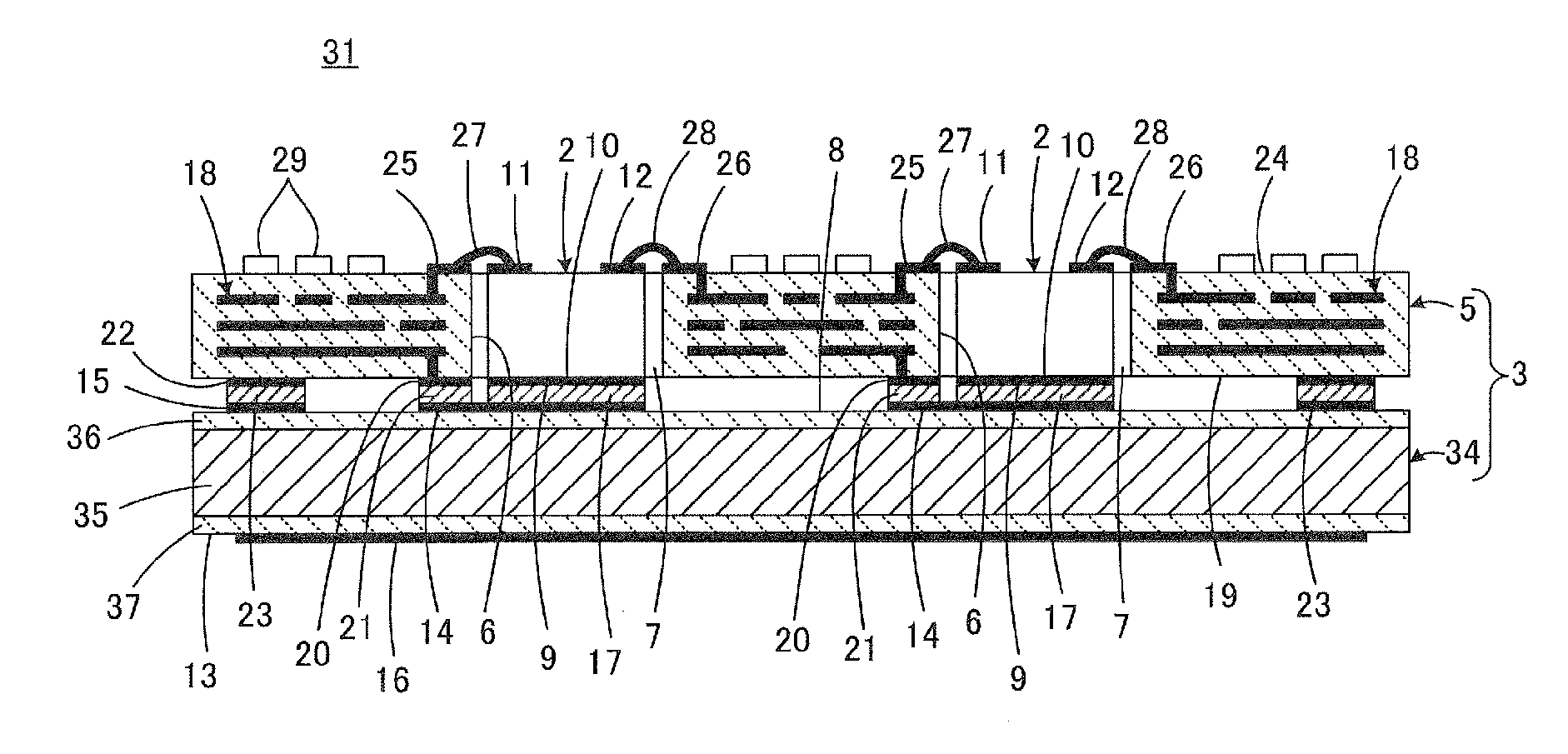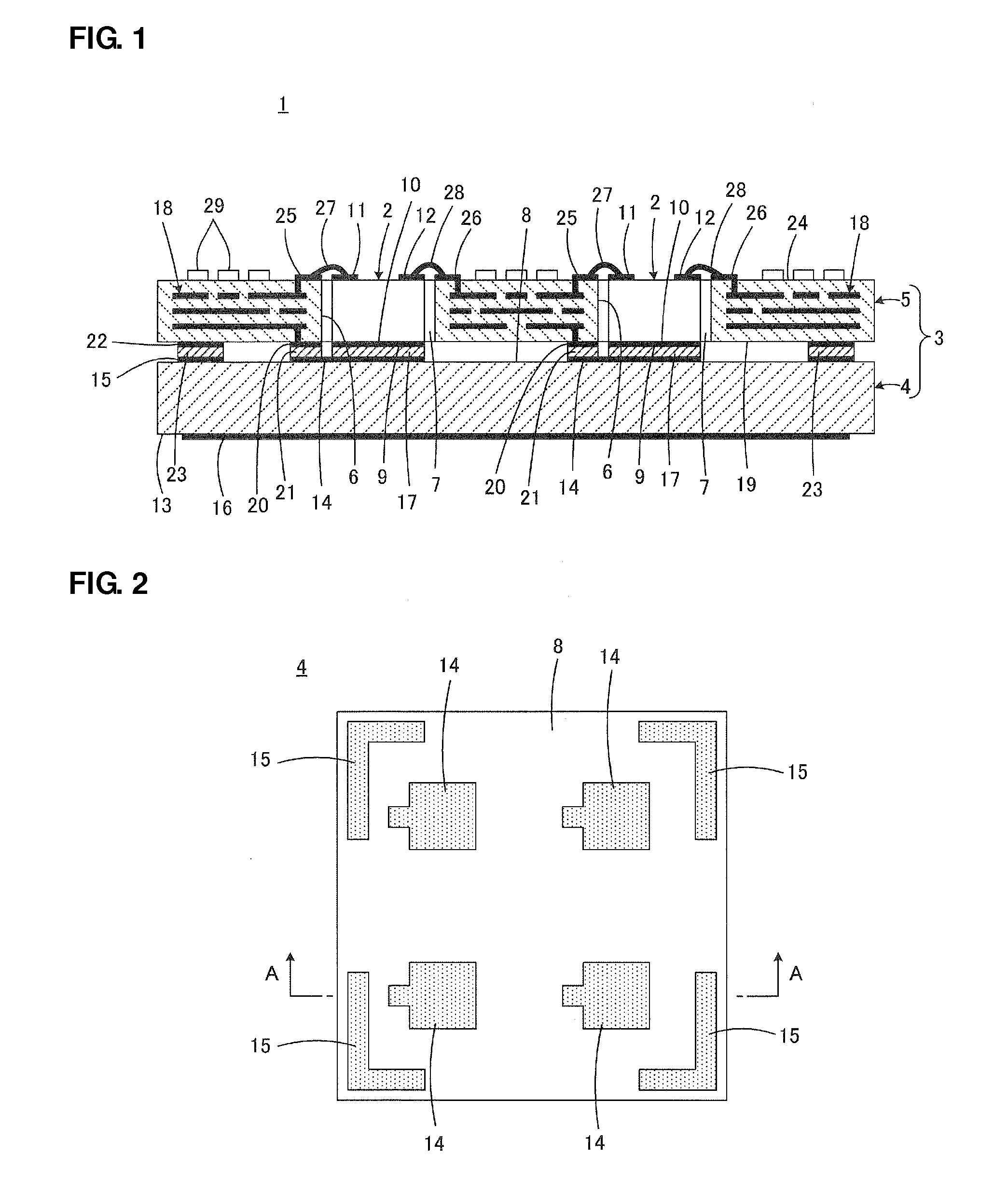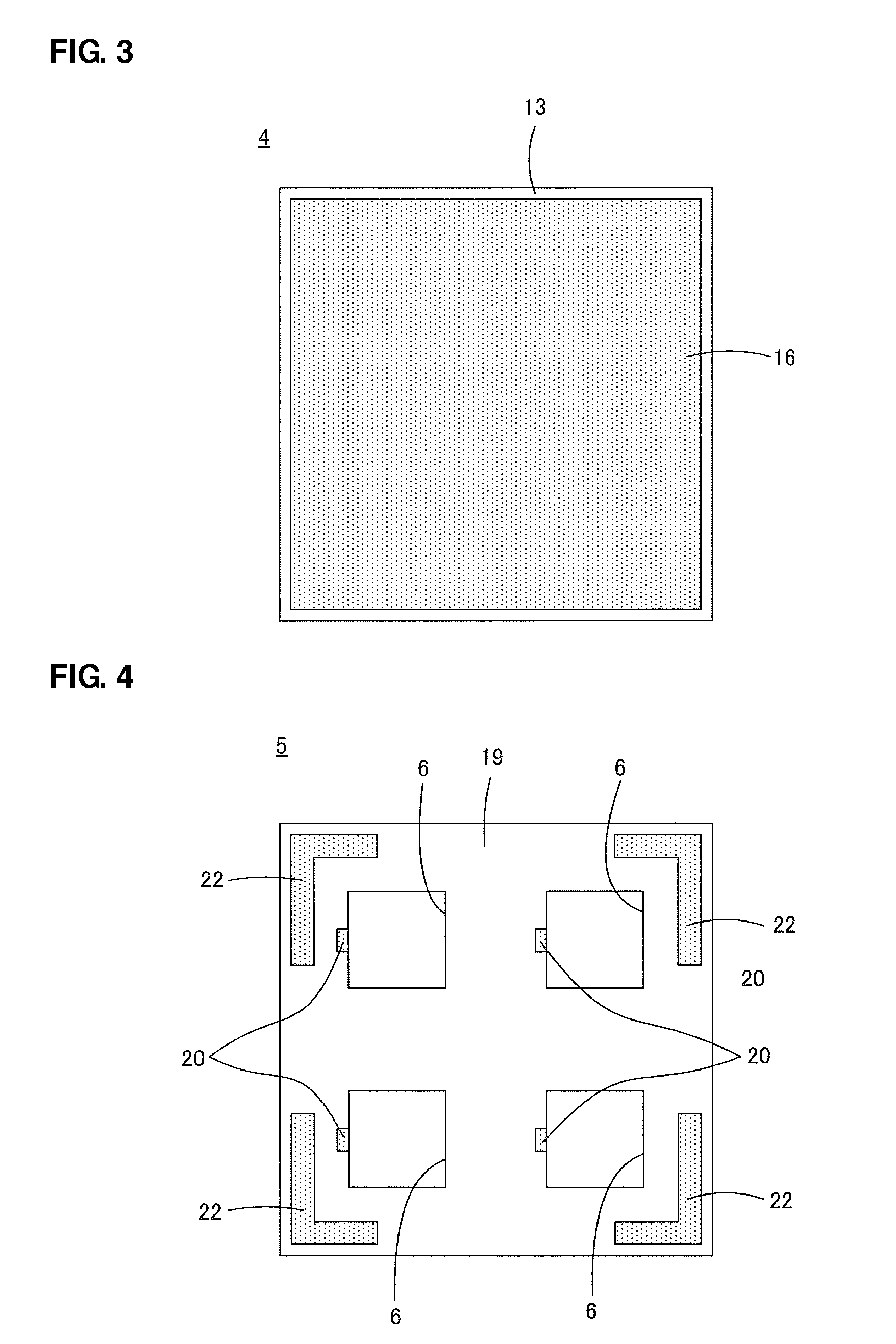Semiconductor device
a technology of semiconductor elements and semiconductor components, applied in the field of semiconductor devices, can solve the problems of not being able to fully support the higher current that has been demanded, cannot be applied to the case of a semiconductor, and cannot be fully supported by the higher current, so as to reduce the size of the semiconductor element, and achieve the effect of efficient realization of the wiring substra
- Summary
- Abstract
- Description
- Claims
- Application Information
AI Technical Summary
Benefits of technology
Problems solved by technology
Method used
Image
Examples
Embodiment Construction
[0038]A semiconductor device 1 according to a first preferred embodiment of the present invention will now be described with reference to FIG. 1 to FIG. 4. FIG. 1 is an enlarged view as compared to FIG. 2 to FIG. 4. The cross section illustrated in FIG. 1 corresponds to a cross section taken along line A-A in FIG. 2.
[0039]As illustrated in FIG. 1, a semiconductor device 1 includes a plurality of semiconductor elements 2 and a substrate assembly 3 to mount the semiconductor elements 2. The substrate assembly 3 is an integrated combination of a heat dissipating substrate 4 and a wiring substrate 5.
[0040]The wiring substrate 5 includes a plurality of through holes 6 passing therethrough in a direction perpendicular or substantially perpendicular to the principal surface direction. The semiconductor elements 2 described above are disposed in the respective through holes 6. In the illustrated present preferred embodiment, as can been seen from FIG. 4, the wiring substrate 5 preferably in...
PUM
 Login to View More
Login to View More Abstract
Description
Claims
Application Information
 Login to View More
Login to View More - R&D
- Intellectual Property
- Life Sciences
- Materials
- Tech Scout
- Unparalleled Data Quality
- Higher Quality Content
- 60% Fewer Hallucinations
Browse by: Latest US Patents, China's latest patents, Technical Efficacy Thesaurus, Application Domain, Technology Topic, Popular Technical Reports.
© 2025 PatSnap. All rights reserved.Legal|Privacy policy|Modern Slavery Act Transparency Statement|Sitemap|About US| Contact US: help@patsnap.com



